Understanding Psychedelic Therapy
What Is Psychedelic Therapy?
Psychedelic therapy involves the use of psychedelic substances in a controlled therapeutic environment to help individuals confront psychological issues, such as trauma, depression, and anxiety. The substances used, including psilocybin, MDMA, and ayahuasca, create altered states of consciousness, allowing patients to access deeper parts of their psyche.
This form of therapy seeks to harness the profound and often transformative effects of psychedelics. It aims to facilitate emotional breakthroughs, expand awareness, and foster new perspectives on personal challenges.
The growing interest in this field has led to a resurgence of research, with studies exploring the therapeutic potential and safety of these substances. Recent findings suggest that psychedelics can promote neuroplasticity, the brain’s ability to reorganize itself, which may be key in overcoming entrenched patterns of thought and behavior associated with mental health disorders.
Therapeutic relationships between the patient and the therapist play a crucial role in the success of psychedelic therapy. A strong bond built on trust and empathy can enhance the therapeutic experience, allowing patients to feel safe enough to explore their inner worlds. This dynamic is particularly important as individuals may confront deeply buried emotions or memories during their sessions, making the support of a skilled therapist invaluable.
The History of Psychedelic Therapy
The modern exploration of psychedelic therapy can trace its roots back to the 1950s when researchers began examining the potential benefits of substances like LSD and psilocybin. During this period, numerous studies indicated positive outcomes for various mental health conditions, including addiction and PTSD.
However, the cultural upheaval of the 1960s, marked by the counterculture movement and widespread recreational use of psychedelics, led to a backlash. Regulatory bodies, such as the United States government, placed strict controls on these substances, halting research and pushing psychedelic therapy into the shadows until recent years.
As societal attitudes towards mental health have evolved, there has been a renewed interest in these substances, with numerous clinical trials underway to investigate their efficacy in treating conditions like depression, anxiety, and end-of-life distress.
The Principles of Psychedelic Therapy
The principles underlying psychedelic therapy are rooted in intentionality, set and setting, and integration. Intentionality refers to the goals that the therapist and patient establish before engaging in a psychedelic session. These goals guide the therapeutic experience and ensure a focused approach to treatment, and can include:
- Set: This refers to the mindset of the patient entering the therapy session. A positive, open mindset is crucial for a beneficial experience.
- Setting: The environment where the session takes place must be controlled and safe, contributing to a supportive atmosphere.
- Integration: Post-session integration helps individuals process their experiences and apply insights gained during therapy to their daily lives.
Integration is often facilitated through follow-up sessions, where therapists help patients make sense of their experiences and incorporate newfound insights into their everyday lives. This process can involve various techniques, such as talk therapy, journaling, or creative expression, allowing individuals to articulate their journeys and solidify the lessons learned.
As the field of psychedelic therapy continues to evolve, practitioners are increasingly recognizing the importance of this integration phase, emphasizing that the therapeutic benefits of psychedelics extend far beyond the session itself.
The Science Behind Psychedelic Therapy
Neurological Effects of Psychedelics
Psychedelics impact various neurotransmitter systems, particularly serotonin receptors. For instance, substances like psilocybin and LSD primarily target 5-HT2A receptors, which are linked to mood regulation and perception.
This interaction results in increased connectivity between different regions of the brain, creating a state often described as “hyperconnected.” Many patients report feeling a sense of unity and interconnectedness, which can facilitate deep emotional insights and a re-evaluation of personal narratives. This heightened state of awareness can also lead to a dissolution of the ego, allowing individuals to confront and process emotions that may have been suppressed for years.
Psychological Impacts of Psychedelic Therapy
The psychological impacts of psychedelic therapy can be profound. Many participants in controlled studies report experiencing significant reductions in symptoms of depression, anxiety, and PTSD following therapy sessions. The insights gained often lead to a shift in perspective regarding traumatic experiences or personal relationships.
Patients frequently describe a newfound sense of openness, acceptance, and willingness to engage with their emotions. These changes can result in improved mental well-being and enhanced resilience in facing life’s challenges.
The therapeutic setting in which these substances are administered plays a critical role; the presence of trained therapists can provide a safe environment that fosters trust and encourages exploration of difficult emotions. This supportive framework is essential for maximizing the benefits of the psychedelic experience, allowing individuals to navigate their inner landscapes with guidance and care.
Types of Psychedelic Therapy
Ayahuasca Therapy
Ayahuasca, a traditional Amazonian brew containing the psychoactive compound DMT, is increasingly utilized in therapeutic contexts. Ceremonies are typically led by experienced shamans, providing a unique blend of medicine and spirituality.
Participants often report cathartic emotional releases and transformative experiences during these ceremonies. The communal aspect of ayahuasca therapy also fosters a strong sense of connection among participants, which can further aid the healing process. This shared experience can create a supportive environment where individuals feel safe to explore their vulnerabilities, often leading to profound insights and personal growth.
The ritualistic elements of the ceremony, including music and chanting, can enhance the therapeutic effects, helping individuals to integrate their experiences into their daily lives.
LSD-Assisted Therapy
LSD-assisted therapy combines traditional therapeutic techniques with the psychedelic experience fostered by LSD. Patients often take the substance in a supportive environment, working closely with therapists to navigate their experiences.
Research has shown that LSD can help individuals confront deep-rooted psychological issues, providing them with the opportunity to reframe their experiences and gain insights about themselves and their relationships. The structured setting of LSD therapy allows for a safe exploration of thoughts and feelings, often leading to breakthroughs that can be difficult to achieve through conventional therapy alone.
The effects of LSD can linger long after the session, potentially leading to lasting changes in perspective and behavior, which can be particularly beneficial for those struggling with anxiety, PTSD, or addiction.
Psilocybin Therapy
Psilocybin therapy utilizes psilocybin mushrooms, focusing on facilitating new perspectives and emotional healing. Clinical trials have shown strong evidence in treating conditions such as severe depression and existential distress in terminal illness.
Patients undergo guided sessions, where they are encouraged to explore challenging thoughts and feelings with the support of trained professionals. The therapeutic outcomes have been promising, showing significant and lasting reductions in symptoms. During these sessions, participants often experience a heightened sense of awareness and connection to the world around them, which can lead to profound realizations about their lives and relationships.
The integration of these experiences is crucial, as therapists work with patients post-session to help them make sense of their insights and apply them to their everyday lives, fostering a sense of purpose and well-being that can persist long after the therapy concludes.
The Effectiveness of Psychedelic Therapy
Measuring the Success of Psychedelic Therapy
Success in psychedelic therapy is typically assessed through standardized metrics, including reductions in symptom severity, quality of life improvements, and overall patient satisfaction. Psychometric tools, such as the Hamilton Rating Scale for Depression or the PTSD Checklist, provide objective data on patient progress.
Additionally, qualitative feedback from participants offers rich insights into how these experiences have altered their perceptions and coping strategies. The combination of quantitative and qualitative measures can provide a comprehensive picture of the therapy’s effectiveness.
Long-Term Effects and Benefits
Long-term effects of psychedelic therapy have been a subject of exciting research. Many studies indicate that benefits may persist long after the sessions, with some patients reporting lasting improvements in mood and mental clarity. Participants frequently highlight shifts in perspective, such as a greater appreciation for life and stronger connections with others.
The ability to maintain these benefits is often attributed to the depth of insight gained during the experience, leading to significant lifestyle changes and better strategies for coping with adversity.
Risks and Controversies Surrounding Psychedelic Therapy
Potential Side Effects and Dangers
Potential side effects of psychedelics can include anxiety, confusion, and in some cases, the exacerbation of underlying mental health issues. Notably, individuals with a history of certain psychiatric disorders, such as schizophrenia, may experience negative effects when using these substances. To mitigate risks, it’s essential to conduct thorough screenings and maintain a controlled therapeutic environment, ensuring appropriate support throughout the process.
Ethical Considerations and Debates
The re-emergence of psychedelic therapy has sparked ethical considerations regarding access, regulation, and informed consent. Questions arise about who should be allowed to facilitate these therapies and how to ensure safety for all participants.
There are ongoing debates regarding the commercialization of psychedelic therapy. As research progresses and the potential for these substances in mainstream therapy increases, striking a balance between accessibility and responsible practices will be vital for the field’s future.
To learn about the mental health treatment options available at Ketwell Alaska, contact us today to schedule a consultation.

